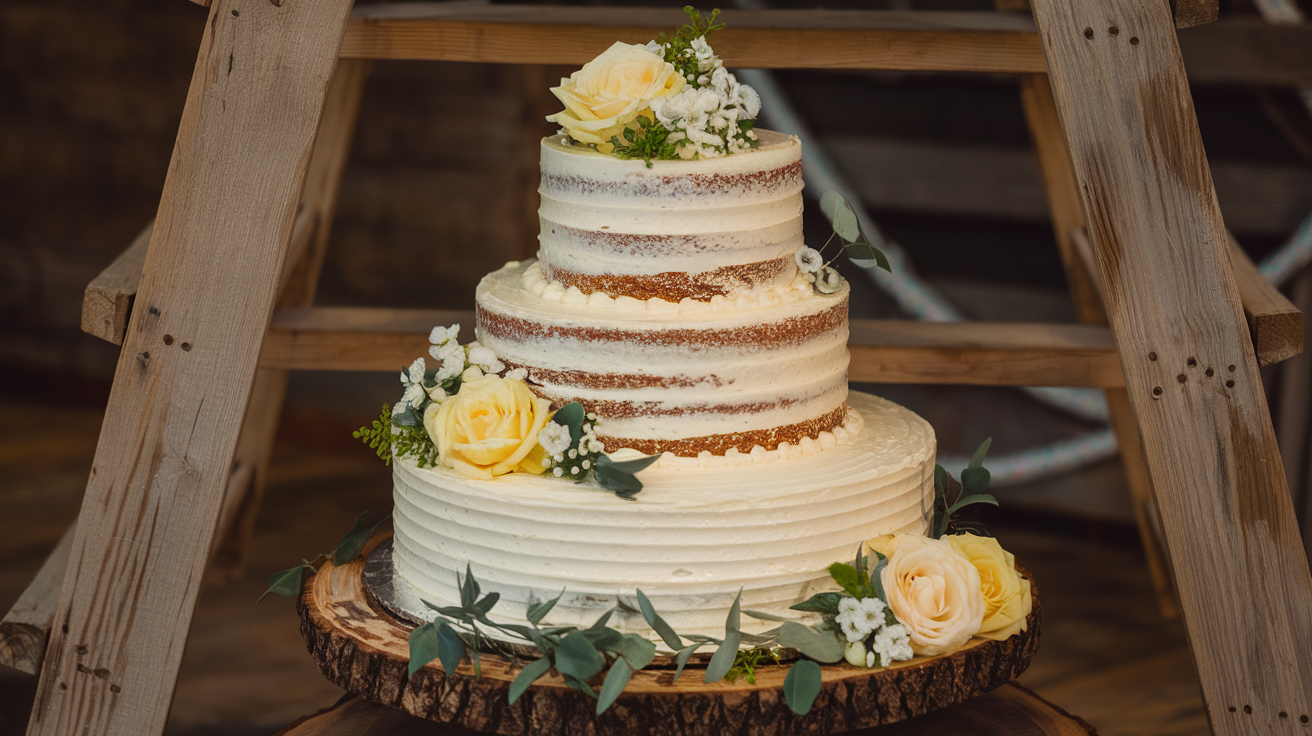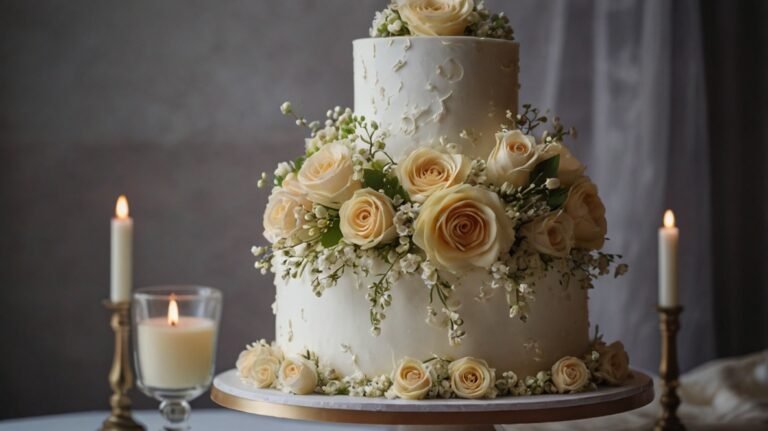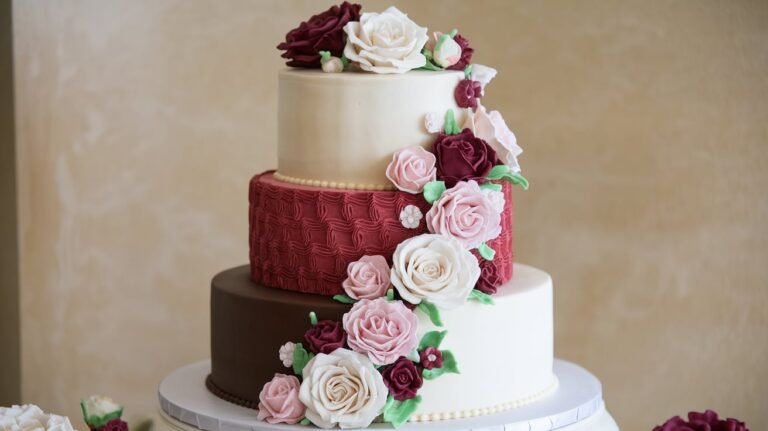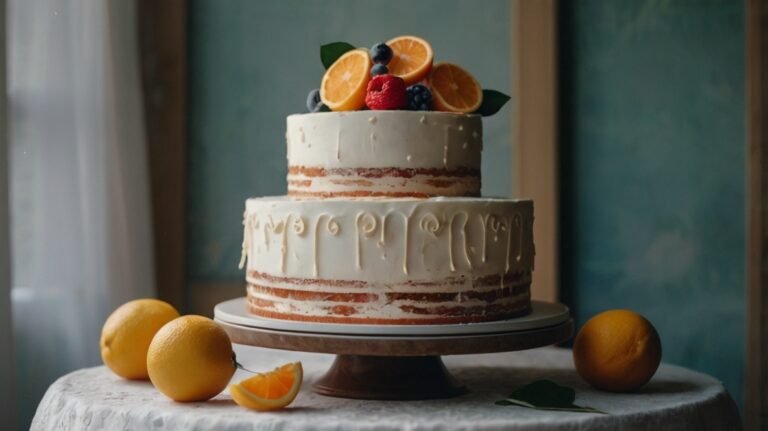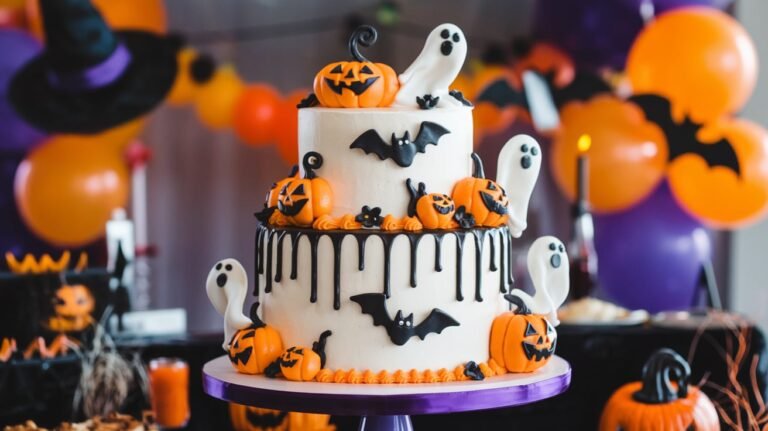How to Create a Basic Rustic Wedding Cake Look with Buttercream Icing
Rustic wedding cakes have become a beloved choice for couples seeking a charming, less formal aesthetic on their big day.
Whether adorned with fresh flowers, modest piping details, or a delightfully “imperfect” finish, these cakes are as visually stunning as they are delicious. The best part? You don’t have to be a professional baker to achieve the rustic look with buttercream icing.
With just a few tools, the right technique, and a touch of creativity, you can make a cake that’s perfect for any rustic wedding theme.
This article will walk you through the step-by-step process of how to create a basic rustic wedding cake look with buttercream icing. By the end, you’ll not only have the technique nailed but also the confidence to give it a try.
Why Rustic Wedding Cakes Are Special
Rustic wedding cakes stand out for their simplicity and elegant design. Unlike traditional frosted wedding cakes, they usually embody natural, earthy aesthetics. The beauty lies in their “less-is-more” approach, favoring textured buttercream over intricate fondant detailing.
If you’re new to cake decorating, this style is forgiving and uncomplicated when compared to some high-maintenance trends. The appeal? It’s not just about minimal frosting; it’s about an effortlessly romantic vibe that fits perfectly into any countryside, vintage, or boho wedding theme.
What You’ll Need to Get Started
Before you begin, gather these materials and tools to make the process smooth and enjoyable:
Materials
- Cake Layers: Use any flavor you like, such as vanilla, chocolate, or carrot cake. Three 8- or 9-inch layers are ideal for a classic tiered look.
- Buttercream Icing: You’ll need enough for crumb coating, covering the cake, and any optional swirls on top. Swiss Meringue buttercream is a great choice for smooth, creamy results.
Tools
- Offset Palette Knives: You’ll need both a large and small knife for spreading and detailing.
- Piping Bag: To create decorative swirls or finishing touches (optional).
- Piping Tip: A Wilton 1M open-star tip works beautifully for buttercream decoration.
- Cake Turntable: While optional, this makes frosting much easier.
- Cake Board or Stand: A sturdy base to hold and display your masterpiece.
Step-by-Step Guide to Creating the Rustic Buttercream Look
Step 1: Crumb Coat Your Cake
Start by assembling your cake layers with a thin layer of buttercream or filling (such as jam, ganache, or lemon curd) between each layer. Use an offset palette knife or a spatula to spread the filling evenly, ensuring each layer is level before stacking the next. Once all the layers are stacked, apply a thin “crumb coat” over the entire cake. This is a light layer of buttercream that seals in any stray crumbs and creates a solid base for your final frosting. Don’t worry if you see crumbs in this layer—that’s the point! After applying the crumb coat, chill the cake in the refrigerator for at least one hour or in the freezer for about 30 minutes. This step is crucial as it firms up the crumb coat, making it easier to work with the next layer of buttercream.
Step 2: Apply a Thick Layer of Buttercream
Once the crumb coat is set and the cake is chilled, it’s time to apply the main buttercream layer. Using a large offset palette knife or a bench scraper, slather on a thick layer of buttercream—about ½ inch thick—over the entire cake. Start with the top of the cake and work your way down the sides. Don’t stress about making it perfectly smooth at this stage; the goal is to get an even layer of buttercream all around. Use a turntable (if you have one) to make this step easier and ensure the buttercream is distributed evenly across the surface.
Step 3: Create Texture with Vertical Lines
Now comes the fun part—adding that rustic, woodsy texture! Grab a small offset palette knife or the edge of a spoon to create vertical ridges along the sides of the cake.
- Begin at the base of the cake and gently drag the knife upwards in a single, continuous motion toward the top. Avoid lifting the knife midway to ensure smooth, uninterrupted lines.
- Keep the pressure consistent but light, just enough to create texture without removing too much buttercream.
- Rotate the cake slowly as you work, focusing on maintaining even spacing between the ridges for a cohesive, natural look.
The goal is to create an elegant, imperfect finish that feels organic and charming. If you’re unsatisfied with any section, you can always add more buttercream and try again.
Step 4 (Optional): Piping Decorative Swirls on Top
For an extra touch of elegance, you can add decorative buttercream swirls to the top of the cake. Fill a piping bag fitted with an open-star tip (such as a Wilton 1M) with buttercream. Hold the piping bag at a 90-degree angle to the cake and apply steady, even pressure as you pipe swirls or rosettes around the top edge of the cake. For a uniform look, start piping at one point and move smoothly in a circular motion until you complete each swirl. This step adds visual interest and a professional touch to your cake.
Step 5 (Optional): Top It Off
Complete your rustic masterpiece with a few decorative garnishes to make it truly stand out. Popular options include:
- Fresh flowers: Use food-safe blooms like roses, lavender, or edible flowers to create a romantic, rustic vibe. Be sure to wrap the stems in floral tape or plastic wrap before inserting them into the cake.
- Fresh berries: Add vibrant pops of color and flavor with raspberries, blueberries, or blackberries. Arrange them in clusters for a natural look.
- Sprigs of greenery: Small sprigs of herbs like rosemary, thyme, or mint can add a fresh, earthy touch.
- Minimalist cake topper: For a simple yet stylish finish, consider adding a wooden or acrylic cake topper that matches the occasion.
These additional elements not only elevate the visual appeal of your cake but also help tie it to the theme of your event. Whether it’s for a wedding, a birthday, or a casual gathering, your rustic-textured cake is now ready to impress!
Tips for the Perfect Rustic Wedding Cake
- Work With Chilled Buttercream: Keep your buttercream slightly chilled for better control while spreading and texturing. Too warm, and it may become difficult to manage.
- Imperfect Is Perfect: The charm of a rustic cake lies in its flaws. Slightly uneven lines or textures enhance the handcrafted aesthetic.
- Use Natural Decor: Fresh flowers, herbs, or even seasonal fruits like raspberries can elevate the design while staying true to the rustic theme.
For extra shine, coat fruits with a light glaze made from warmed jam or apple jelly.
- Practice on Dummy Cakes: If you’re making this cake for a special occasion, consider practicing your technique on a foam cake dummy to build confidence.
Why You Should Try This Technique
Rustic buttercream cakes bring together simplicity, style, and flavor. Perfect for those new to cake decorating or seasoned bakers looking for a “wow factor” with minimal stress, this style is versatile and achievable at home.
Plus, they make the ultimate centerpiece for any wedding. The textured finish, natural elements, and soft glow of buttercream tie into nearly all wedding aesthetics, from romantically vintage to elegantly boho.
Sum Up
Creating a rustic wedding cake doesn’t have to involve expensive tools or years of experience. With this step-by-step guide, you have everything you need to craft a buttercream cake that looks straight out of a countryside celebration.
Next time you find yourself dreaming of such cakes or planning a wedding, why not try the technique yourself?
It’s a labor of love with results as rewarding as the process. Happy baking!
